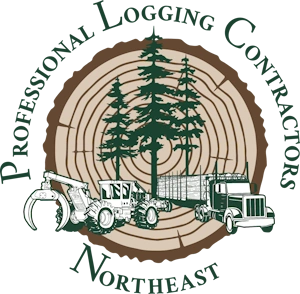‘- As We See It The Endangered Species Act – Second Take
Growing up in a small rural town in Northern California I have seen first-hand how well intended regulation can destroy jobs once manipulated by the regulatory agencies and the environmental industry. Recently we saw how dwindling populations of the Northern long eared bat pushed Federal Fish and Wildlife to take immediate action. Many of us were to be impacted by this action, which raised the question of the quality of science, the proposed restrictions and the real reason for the decline. This action sent tremors across the wood products industry of our Nation. Industry professionals from across our country began to see first hand what those of us in the Pacific North West have been dealing with for over 25 years. The Endangered Species Act of 1973 was signed into law by President Richard Nixon on December 28, 1973, it was designed to protect critically imperiled species from extinction as a “consequence of economic growth and development un-tempered by adequate concern and conservation.” The U.S. Supreme Court found that “the plain intent of Congress in enacting” the ESA “was to halt and reverse the trend toward species extinction, whatever the cost.”[i] The summer of 1990 on the North Coast of California was a time that would change the course of our regional timber industry forever due to a pair of events. The first was Redwood Summer, where a few hundred college students decided to spend their summer vacation in sunny California protesting the nations most stringent forest regulatory system and sampling some of the regions local produce. The second event was the listing of the Northern Spotted Owl as threatened under the Endangered Species Act. Amongst other factors these two propelled the California timber industry into a death spiral, which led to the closure of 84 out of 117 sawmills and reduced the industry by 70% in just 20 years. In order for any timber harvest in Northern Spotted Owl (NSO) territory to take place survey protocols must be followed to locate and protect the species. This process has evolved over the years and has become very burdensome; however the level of thoroughness has provided some very interesting data, collected mostly by biologists employed on private land. This data shows that the species is declining on Federal Forests, Parks and areas where management is nonexistent. While the opposite is true for private landowners that have continued to manage their land and are seeing NSO populations increase. As with all species they need life’s essentials to thrive and they are finding that in our managed forests. More recently the finger has been pointed at the Barred Owl as one reason behind the decline of Northern Spotted Owl, and the solution has been to authorize management of the Barred Owl species by termination. A logical person has to ask how many years this termination policy will take to produce another endangered specie for us to protect. Termination seems like a simple solution because the Barred Owl is not a listed species but it begs the question, what do you do when a federally listed Southern Sea Otter is eating a federally listed Coho Salmon? History has shown that biologists, usually through the help of lawyers, add regulation to the fishing industry and others to make up for this natural process. Currently under the ESA it is not uncommon to shut down timber operations for months to protect potential habitat for species in areas that represent the extreme reaches of their range. After 40 years of living and working with the Endangered Species Act I think it is time to revisit the actual intent of Congress. If nothing else we need an Endangered Workers Act, designed to protect critically imperiled Humans from extinction as a consequence of overzealous laws and regulations. After a 70% decline in the last 25 years it is time to petition the California State Fish and Wildlife to list the California Logger as an endangered species, but we wouldn’t stop there because we would have to add mill workers, log truck drivers, foresters and many other professions specific to the forest products industry. We would also have to look at indirect jobs that have been affected and why whole communities have become dependant on the government for support rather than their own initiative. This trend is on the move across the Nation, and many states are already seeing the impacts from regulations like these being used for purposes other than their intended use. Perhaps if proper science rather than political science was the determining factor for these listings, the ensuing regulations and restrictions would actually help the species and lead to their recovery. At that point perhaps both the imperiled species and imperiled workers could be removed from their respective endangered list. [i] Wikipedia, Northern Spotted Owl Myles Anderson is the current President of the American Loggers Council and he and his father Mike own and operate Anderson Logging, Inc. based out of Fort Bragg, CA. The American Loggers Council is a non-profit 501(c) (6) corporation representing professional timber harvesters in 30 states across the US. For more information, visit their web site at www.americanloggers.org or contact their office at 409-625-0206.


